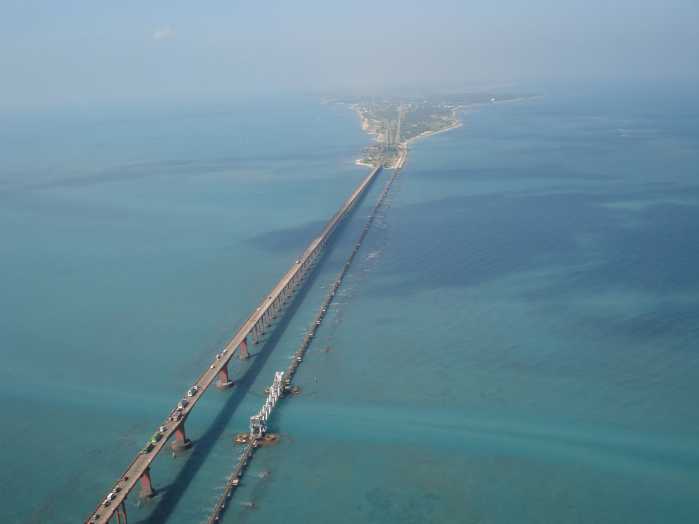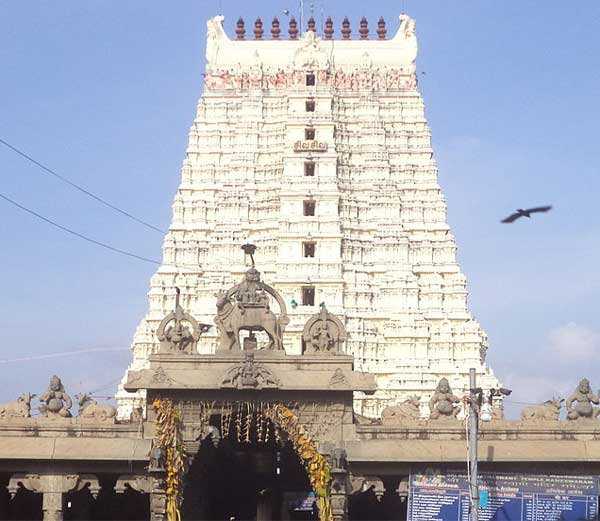No products in the cart.
India’s true essence is its ability to integrate culture and innovation in an aesthetic way. Rameshwaram is on the cutting edge of innovation with its one of a kind pamban bridge. On the other hand it also has the architectural beauty of the many temples that encompass the Hindu heritage and culture. Hence in every way Rameshwaram is an embodiment of Indian values.
Rameshwaram as such is a small island off the Gulf of Mannar which is connected by the Pamban Bridge to the Indian main land.
But the legends that this island holds are innumerous. Every Indian is familiar with the story of monkeys building a bridge to help lord ram save Sita Devi at least slightly modified versions of the Ramayana that were told and re told by our grandparents and parents. Some of us would have been awestruck deeming the monkeys as immediate super heroes while others where cynical about a bridge on the sea which floated because they were inscribed with the name of lord Rama. Whatever the story may be Rameshwaram has stood the test of time and embodies the true spirit of Ramayana with much gusto. Both Tamilnadu and Rameshwaram are integral part of the epic Ramayana. Ceylon was situated right across the ocean (Palk Strait). A war between Rama and Ravana took place with the help of the monkey clan and their ruler. Maybe that is the reason that region remains an area of conflict till today which seems never ending but lord Rama emerged successful in his battle and rescued Sita Devi. On his way he again stopped at Rameshwaram, the reason why we have the famous Ramanatha swami temple. Rameshwaram is a pilgrimage site for both vaishites and shaivites. The main deity is a lingam (Shiva) which was worshipped by lord Rama who is an incarnation of lord Vishnu. This gives the name of the deity ramalingam and the name of the temple as ramanatha swamy temple.
The Ramanathaswamy temple is the identity of the place, even the name Rameshwaram has been derived from the name of the deity.
The long drawn corridors of the temple have seen its fair share of history. They are one of the tallest corridors anywhere in the world. Right from the time the time when the deity was kept in a small thatched hut to the sprawling 15 acre heavenly abode it is today. Rome was not built in one day similarly the construction of these high long corridors and the surrounding structures happened over the rule of several kings of Tamilnadu and Ceylon.
The great Indian epic Ramayana, gives a detailed account about this temple. The shiva lingam was created here by Sita after Rama defeated Ravana. Even though ravana was not exactly a good person, he still happened to be a Brahmin and hence lord Rama had to perform special rites to be rid of bramahatya dosham. Rama’s beloved devotee hanuman went all the way to mount Kailas to get a shiva linga. Since the rites had to be performed immediately sita Devi carved a Shiva lingam out of the sand on the shores of Rameshwaram. Hanuman returned with his lingam soon after. He was quite furious on seeing another lingam already in place. Hence lord Rama asked him to place his shiva lingam (which is known as the vishwalingam) to the right of the existing one and also said that all pujas must be done first to the hanumantha lingam or vishwalingam. To this day this practice is followed in the Ramanatha swami temple.
After the Kashi Vishwanath temple in Varanasi, Ramanathaswamy temple is considered as a divine pilgrimage spot. Very similar to the holy dip in Ganga, Rameshwaram also has 22 Theerthams, which are nothing but wells where pilgrims take a traditional bath. Legend has it that these Theerthams were formed when Rama fired arrows from his bow on the ground. Every theertham is said to have distinctive taste and salinity and it is well known for its curative powers. The rites start with the Agni theertham outside the temple of the shores of the beach and it is followed by the Shiva theertham, nala theertham, savithri theertham and so on. An interesting fact is that bathing in the kavacha theertham stops one from going to hell.
There are several other Theerthams that have gone missing over the time. The dharma theertham was recently unearthed by a youth organization in Rameshwaram.
A report in the international journal of science, environment and technology, 2013 has proved that the water in the theerthams has lost their sanctity and medicinal powers due to human intervention. This has been mainly caused by dumping flowers and garlands and other offerings after pujas. The water at present is deeply contaminated and people who bathe in it have a risk of developing diseases.
A trip to Rameshwaram is simply not complete without a visit to the gandha mathana parvatham, which houses a chakra with the impression of lord Rama’s feet. From this highpoint the entire island is visible which makes for an excellent view. Another place of importance is the Vishnu temple a few miles away from the main temple called darbasayanam. Legend has it that lord Rama laid on a bed of grass here.
Rameshwaram on the whole is a culmination of Hindu culture and also architectural heritage. That is the reason why lakhs of Indians and foreigners throng this destination in search of their spiritual self. It also beautifully joins the two main sects of Hinduism (shaivites and vaishnavites). One can’t help but wonder if some genius along the way spun this beautiful story of Rama worshipping Shiva only to do away with the bitterness between the two communities. After all all is fair in the name of peace and love.







